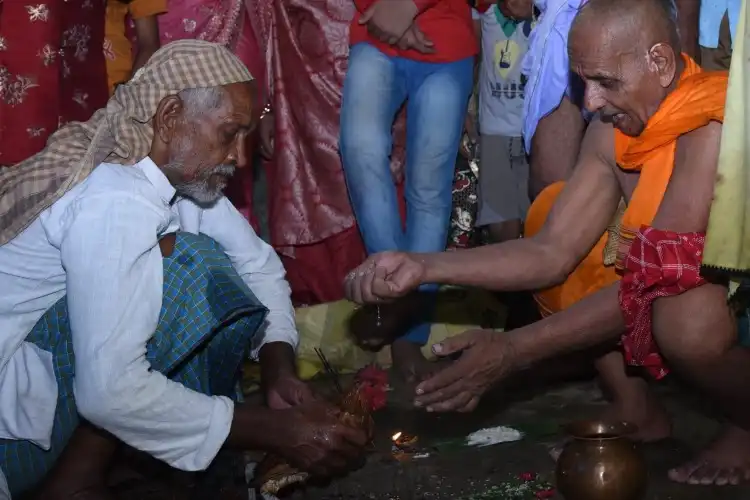
Manjit Thakur/New Delhi
A small village in Jharkhand State’s Mithila region presents a tradition of Hindu and Muslim bonds that commenced ages ago and have been mandated by scriptures.
The Ugratara temple located in the village Mahishi of Mithila is one of the Shaktipeeths, the seat of the Goddess or the feminine element of divinity as per the Hindu religion. Although it’s one of the holiest places for worshippers of the Shakti, the prayers in the temple involve a strange tradition of the offering of a chicken and the presence of a Muslim.
The tradition has it that the sacrifice will be made in front of a Muslim; otherwise, the prayers may not be answered. Village Mahishi is the epicenter of the Mithila region’s rich history and folklore. The temple of Ugratara Devi is considered to be the abode of Goddess Kali, the fierce form of Shakti. The temple in Mahishi village is also a holy place for Vaishnavites, worshippers of Vishnu.
Interestingly, the villagers also follow some traditions of Buddhism.
Pandit Jatashankar Jha, an expert in the traditions of Mithila, says “the temple of Ugratara Devi is important for Shakti’s worshippers; for the Vashnavites, it’s the seat of a famous incident in which a high-level scholarly discourse was held between a local scholar Pandit Mandan Mishra and Adi Shankaracharya. Also, it’s a sacred place for Buddhists.”
Jha says that Mahishi village was the venue of a debate between Mandan Mishra and Shankaracharya. Mandan Mishra belonged to the Vaishnava sect of Sanatan dharma, while his wife Bharati was inclined towards Buddhism.
Mahishi village is also famous for saints like Laxminath Gosai who was born here. Another peculiar aspect of the village is that Mallinatha, the only female Tirthankara of Jainism and the founder of the Shvetambara tradition, also lived here.
Describing the saga of Mahishi, Jha says, “The parental home of Queen Padmavati, who became the longest reigning ruler of Mithila, was in Mahishi. The tradition of all religious sects is alive in this village,” he said.
 Ugratara temple in village Mahishi of Mithila
Ugratara temple in village Mahishi of Mithila
Mahishi has the biggest Shakta monastery in Mithila. The Shakta tradition has not only survived but is also practiced there.
In Hinduism, Malla is a caste that in today’s caste chart are Muslims.
In the Hindu homes of Mithila, Kuldevi (Goddess of a family) is usually worshiped on auspicious occasions. The Hindus of the village offer an animal sacrifice to propitiate the Goddess. It’s either a chicken or a lamb.
Tradition has it that the chicken can be slaughtered by only a Mallakshya, who are today’s Muslims. Without a Muslim’s presence, the worship of the Goddess can not be propitiated.
The Muslim involved in ritualistic sacrifice are sent off with new clothes and dakshina (money). There are many stories behind this tradition. Hindus who have an objection to the presence of Muslims in Garba must be told about this tradition.
Jha quotes the scriptures on this. He says,“Religious scriptures have it that Mithila's tradition is the solution to all the disputes arising out of dilemma on religious practices.”
However, most importantly, Jha points out that sacrificing a chicken before the goddess is not a unique thing. Such sacrifices have been the tradition in the Vammarga of the Shakta tradition.
ALSO READ: What made Kashmiri youth lose memory of horrors of kabali raid?
Experts say that such practices in Hinduism are a sign of its coordinated form and the arrival of a Muslim person in Mahishi to offer sacrifice before the goddess is the result of this mixed culture of the society.
